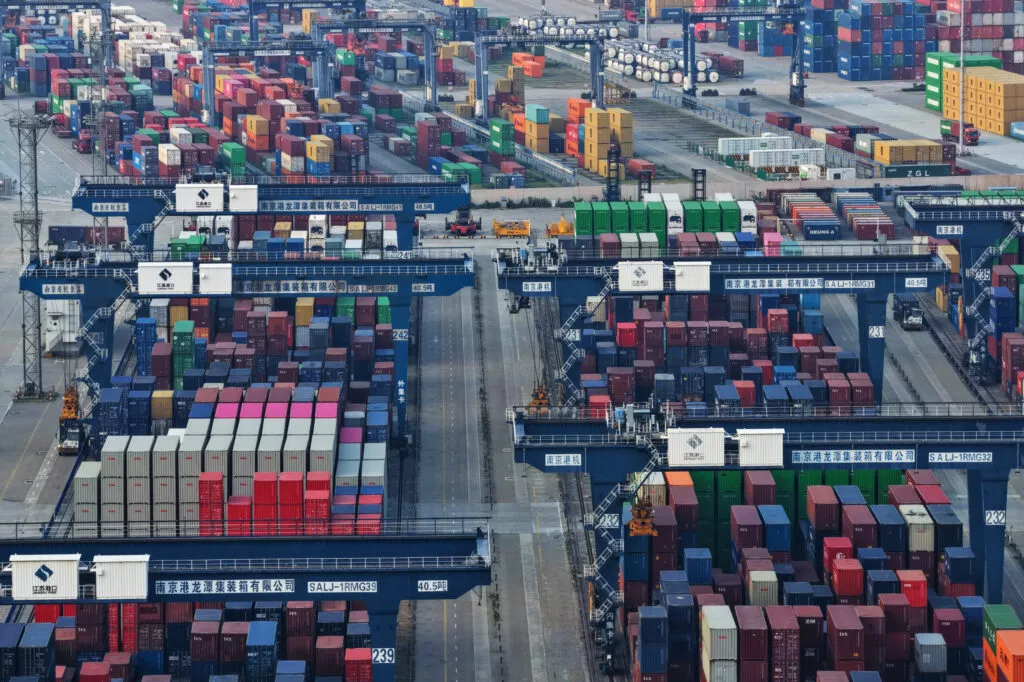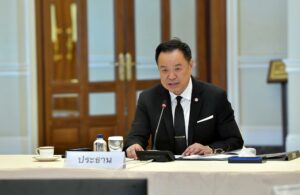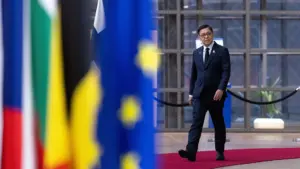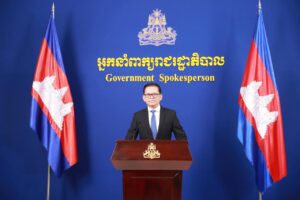Recalibrating Southeast Asian trade policy in a world of economic fragmentation
The US–China rivalry is reshaping global supply chains, presenting ASEAN with unprecedented opportunities and existential threats to the economic integration model that has driven its remarkable growth.
A malign force reshaping global trade is the US strategy of embedding stringent transshipment provisions in bilateral deals with ASEAN countries running trade surpluses. In exchange for lower tariffs than the blanket rates US President Donald Trump announced on ‘Liberation Day’, countries must agree to measures ostensibly designed to prevent trade rerouting. But these transshipment requirements risk unravelling regional supply chains, effectively weaponising trade policy to dis-integrate existing production networks.
During the first two months after ‘Liberation Day’, China’s total exports continued to grow at over six per cent year-on-year, even as exports to the United States declined by almost one-third. This decline was compensated by an 18 per cent rise in Chinese exports to ASEAN, accounting for almost half of China’s export growth.
This shift has given birth to ‘connector countries’ as firms seek to relocate to lower-tariff locations with sufficient manufacturing capabilities like Vietnam to replace Chinese production while the United States seeks alternative suppliers. In the first four months of 2025, ASEAN countries exported more products to the United States than China, accounting for about 11 per cent of total US imports.
While this export surge may signal supply chain realignment and appear to favour ASEAN, redirecting exports from China carries large risks. Goods are redirected across borders more quickly than investment from relocating companies, which takes much longer to materialise. ASEAN may first experience an influx of Chinese imports before seeing the benefits of any investment relocation.
But the punitive US transshipment measures may slow down production relocation out of China. The US–Vietnam deal illustrates the challenge starkly. To qualify for a 20 per cent tariff rate instead of 40 per cent, Vietnam must prove that its exports are not transhipped from other countries.
Defining the origin of goods is not straightforward, especially considering the intricate nature of modern supply chains. Materials undergo several steps before reaching their final destination, potentially involving processes that US border authorities deem ‘non-meaningful’, labelling them as transhipment. This means relocating China’s factories to ASEAN may not be as economically profitable as before, particularly for firms that still carry substantial Chinese content.
This is why defining transshipment is the next most important game to watch. If applied too broadly to police high foreign content, the transshipment clause in the US trade deal could have devastating effects on intra-ASEAN and Regional Comprehensive Economic Partnership supply chains. ASEAN economies, especially those that already or nearly have a deal with the United States, would be forced to de-risk from China or pay a 40 per cent additional import duty instead of 19–20 per cent.
ASEAN countries rely heavily on competitive imported materials from China as inputs into their global exports. On average, one-third of ASEAN economies’ imported materials are from China, with Vietnam being the most dependent, at 40 per cent. Input dependency on China has also been rising and Chinese content in ASEAN countries’ exports has nearly tripled from 2005–20. Even for Indonesia, where the share remains below three per cent, Chinese value-added accounts for about one-fourth of its total foreign value-added in exports.
The departure from most-favoured nation principles creates incentives for tariff circumvention through export redirection, driving transshipment provisions to serve US political objectives. But the US logic will unravel the multilateral trading system that has underpinned regional and global economic growth.
ASEAN’s own negligence towards a multilateral trading system has contributed to ad hoc responses from ASEAN countries, undermining the collective stance needed to counter US pressure tactics effectively.
Vietnam’s defensive compliance enabled a swift bilateral deal with the United States, conceding zero tariffs and stricter transshipment requirements in exchange for continued market access. This approach provides some short-term certainty but creates long-term dependence on the United States and destroys value chains.
Strategic realignment, pursued by Indonesia and the Philippines, has tried to use the US tariff shock as an impetus for domestic reforms — improving import regulations, attracting foreign investment and diversifying export destinations towards the European Union and China. While challenging politically, this approach could build long-term economic resilience.
Singapore, Malaysia and Thailand have been quietly rerouting supply chains while maintaining trade neutrality and strengthening engagement in regional and digital trade frameworks. Their strategy aims to avoid direct confrontation with major powers while positioning themselves as stable nodes in a fragmented economy.
Due to its large export share, the United States has successfully forced its agenda on ASEAN countries. But ASEAN must resist US protectionist pressures and extend efforts to build coalitions with countries and regions facing similar pressures.
A unified negotiation strategy and firm stance against discriminatory US measures will far outweigh the perceived advantages of fragmented bilateral deals. Southeast Asia’s ad hoc approach reflects policymakers’ short-sightedness, focused on securing US market access without appreciating how damaging bilateral deals could be if they shatter regional supply chains and shrink global market share.
Existing supply chains are more resilient than often perceived, especially outside geopolitical hotspots. Localisation does not eliminate risk or guarantee more secure supply chains — it merely shifts supply chain risk from foreign to local sources.
ASEAN countries should coordinate to intensify domestic reforms and promote diversification. Trade negotiations with the European Union make strategic sense, but policymakers should move beyond bilateral approaches and pursue multilateral agreements to keep regional arrangements relevant and avoid discriminatory deals.
ASEAN must also anticipate China’s gradual transition towards a consumption-led growth model. If successful, this will create significant demand for exports and investment opportunities. To ensure ASEAN becomes a competitive destination for firms relocating from China, governments should maintain open and investor-friendly policies, keeping regional supply chains intact while enhancing local value-added capabilities.
Without domestic reforms that deliver tangible economic improvements to the local economy and people, international commitments will be politically difficult to sell.
By choosing unity over fragmentation, principled resistance over opportunistic capitulation and regional integration over bilateral dependency, ASEAN can navigate the present challenges while preserving the openness and integration that have made it one of the world’s most dynamic economic regions.
Riandy Laksono is a researcher in the Department of Economics at Centre for Strategic and International Studies (CSIS) Indonesia
Dandy Rafitrandi is a researcher in the Department of Economics at Centre for Strategic and International Studies (CSIS) Indonesia. He is also Editor-in-Chief of the CSIS Editorial Team and Project Director at the Decarbonization for Development Lab.
This article appears in the most recent edition of East Asia Forum Quarterly, ‘Asia’s new trade politics’, Vol 17, No 3.
https://doi.org/10.59425/eabc.1758373200
Source: East Asia Forum





